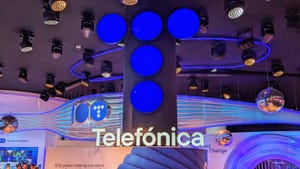ZTE claims SDR first in Hong Kong
The largest GSM operator in Hong Kong in terms of subscribers and revenue, CSL, is using SDR (software-define radio) base stations from ZTE to build out an all-IP integrated 2G/3G network that can be software-upgraded to HSPA+ and, eventually, LTE.
Although the process of swapping out CSL’s existing 2G/3G base stations with ZTE SDR base stations began nearly a year ago, CSL and ZTE chose the MWC event in Barcelona to claim that they had achieved a world first by demonstrating HSPA+ capability – 21Mbps base station sector capacity – on an SDR platform.”SDR allows you to maximise return of investment as it allows you to re-use as many network components as possible,” says Tarek Robbiati, CSL CEO, who added that the cost of the project was in the region of several hundred million Hong Kong dollars. Robbiati expects the project to be completed in the next few months but would not commit to putting a time on commercial launch.
The significance of ZTEs SDR progress was underlined by the presence of Sol Turjillo, Telstra CEO, at the press conference. Telstra is a majority shareholder in CSL and the companies have been exchanging technical know-how during the SDR project. And Turjillo is impressed by the Chinese vendor. “ZTE will be a major leader in high-speed mobile broadband networks,” he says.
Telstra’s principle mobile network vendor is Ericsson, but clearly Turjillo will be watching carefully what happens in Hong Kong; he didn’t rule out a more prominent role for ZTE in Telstra’s plans going forward.
The SDR project in Hong Kong looks innovative, boasting a quad-band antenna solution covering the frequency bands for which CSL have licences: 900MHz, 1800MHz, 2.1GHz and the 2.6GHz 4G licence it secured in an auction last month. And Robbiati says is “comfortable” that SDR will deliver on its promise of providing a smooth upgrade to HSPA+ and LTE when the time requires.
Mr Yin Yimin, CEO of ZTE, echoed those sentiments, adding that the SDR solution could save operators between 20-30 per cent in capex and up to 40 per cent opex savings.
“The CSL/Telstra deal will be a primary reference for us in winning 3G business in our domestic market, where we believe we already have the largest share [among the vendors],” he adds.
About the Author
You May Also Like










.png?width=300&auto=webp&quality=80&disable=upscale)


_1.jpg?width=300&auto=webp&quality=80&disable=upscale)